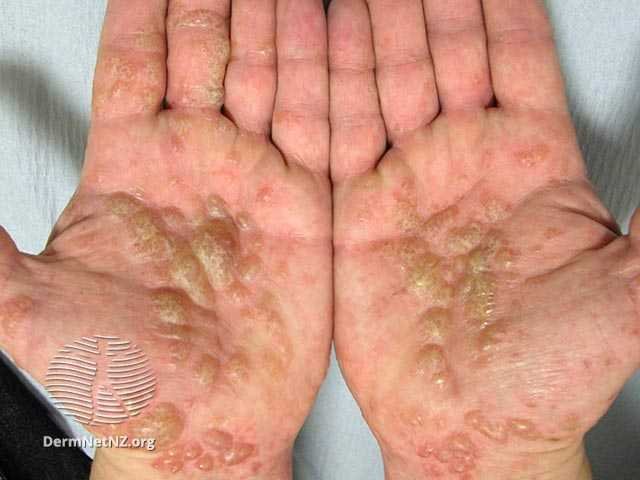
Dyshidrotic Eczema (Dyshidrosis)
Dyshidrotic eczema presents with small, fluid-filled itchy blisters on the sides and palms of the fingers.
Credit: DermNet NZ
What is dyshidrotic eczema?
Dyshidrotic eczema, also known as pompholyx, is a distinct skin condition marked by small, fluid-filled blisters or vesicles. These blisters typically appear on the fingers, palms, toes, and the soles of the feet. The exact cause of dyshidrotic eczema is not well-defined, but various factors might play a role in its development. Although the condition can be distressing, it's often self-limiting, with most cases resolving in about 3 weeks.
What causes dyshidrotic eczema?
While the root cause of dyshidrotic eczema remains elusive, several factors are believed to potentially contribute to its onset, including:
Exposure to allergens
Frequent hand washing or prolonged contact with water
Emotional or physical stress
Sensitivity to specific metals like nickel or cobalt
Seasonal changes, particularly during spring and summer
What are the symptoms of dyshidrotic eczema?
Individuals with dyshidrotic eczema might experience:
Persistent itchiness on the palms and soles
Formation of small blisters or vesicles, primarily on the fingers, toes, palms, and soles
Symmetrical distribution of these blisters, though they generally do not spread to other parts of the body
How do I treat dyshidrotic eczema?
While comprehensive research on treatment for dyshidrotic eczema is still in progress, several medical therapies have been found to alleviate symptoms. These may include:
Topical corticosteroids to reduce inflammation
Barrier creams or moisturizers to protect the skin and lock in moisture
Antihistamines to manage itching
Soaking in a dilute solution of potassium permanganate to dry out blisters
Oral or injectable corticosteroids, typically reserved for severe or resistant cases
The water blisters usually start off small and then can combine to create large ones.
Credit: DermNet NZ
As the lesions heal they can leave a distinctive type of peeling on the skin.
Credit: DermNet NZ



